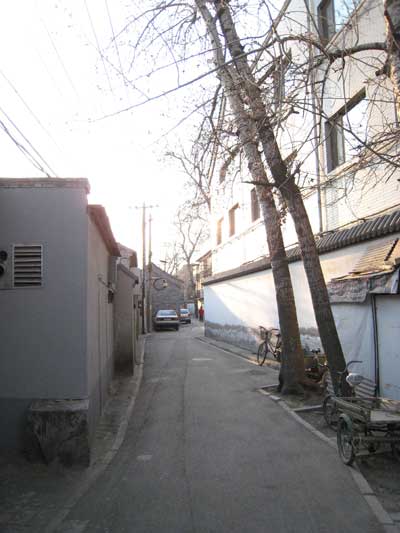Zhonglao: heartbreak hutong
|
|
|
Zhonglao Hutong.Photo: Yin Yeping |
Among the hutong assembled on the northeastern side of Jing Shan Park, one stands out for its exclusive connection with the Forbidden City. This is Zhonglao Hutong. Although its neighboring lanes have not witnessed much reconstruction, it has changed a lot in terms of its inner architectural landscape.
More than 100 years ago, Zhonglao was where you could find the old residence of the concubine Jin Fei's family. In 1889, 15-year-old Jin Fei and her younger sister, Zhen Fei, were selected as concubines to serve the emperor Guang Xu in the Forbidden City. After their selection, they almost never had a chance to return home to see family.
Eternally homesick
The two sisters entered the Forbidden City at the same time, but their experiences were vastly different. Little Zhen Fei was prettier and smarter than her older sister, winning the favor of the emperor as a result. For a concubine, the only way to improve their lives was to either win the heart of the emperor or bear a son for him. Alienated for her unattractive appearance, Jin Fei was doomed to spend the rest of her life deprived of the happiness of becoming a mother and wife.
After the last Chinese emperor Pu Yi came to power, Jin Fei was upgraded to Gui Fei (a high-ranked imperial concubine). Though now with a position just lower than that of the empress, Jin Fei was still unhappy. After more than 30 years of lonely life, her homesickness was reinforced over the years, but her identity restricted her freedom in the palace as long as she lived.
Tears in my telescope
In order to see her mother as often as possible, Jin Fei bought a house in Zhonglao Hutong for her family after 1911. Almost every day, her mother climbed a tower on the artificial hill of No. 32's open yard to look toward Yu Hua Garden in the palace, where another tower was situated. At a set time they would “meet" to view each other through telescopes, for years, until both eventually fell ill and died. In the article Me and my Aunts, by Tang Haixin, nephew of Jin Fei, he wrote that every time, the two spent hours watching each other from the towers, and every time Jin Fei's mother watched her daughter until she climbed back down the garden tower with tears in her eyes.
Nowadays, No. 32 has been replaced by No. 11, which occupies the original courtyard of No. 32. Zhang Zhixiang, the 70-year-old man who has lived here since 1945 said that in its original form, No. 32 was a large residential compound with three inner siheyuan, each around 400 square meters in size. Zhang said that the artificial hill, right inside the gate, topped by a 15-meter-tall tower, was his childhood playground, and that the tower was one of the highest buildings in the area. If you climbed to the top, he confirmed, you could see the tower in Yu Hua Garden. As a child, he even once met the 70-year-old nephew of Jin Fei's aunt, one of the last remaining members of the family.
There has been a succession of owners at No. 32; Peking University used it as a dormitory, while at other times it was a factory. Now, Zhang said, it's been replaced by a real estate company. “In 1988, No. 32 was completely razed," he said, “otherwise it could still be here today." Instead, now, at the original address, rusty doors have replaced the original stone doors. They are closed tightly.
 0
0 









Go to Forum >>0 Comments